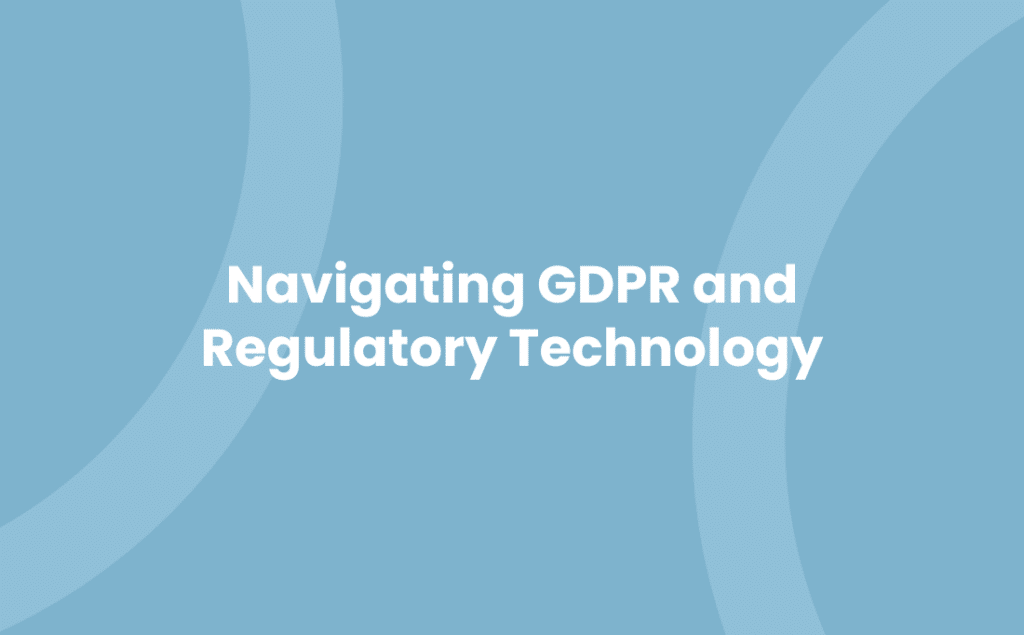Navigating the digital transformation regulatory landscape can feel like a daunting task. You’re not alone if you’re grappling with a myriad of rules and regulations that seem to change as quickly as the digital landscape itself. But don’t worry, we’ve got your back.
In this article, we’ll delve into the complexities of the regulatory environment surrounding digital transformation. We’ll shed light on the key regulations you need to be aware of, and provide practical tips on how to stay compliant while pushing the boundaries of innovation. Get ready to demystify the world of digital transformation regulation.
Exploring the Concept of Digital Transformation
Picture this: An everyday enterprise undergoes a metamorphosis. Handwritten records morph into dynamic digital databases. In-person meetings evolve into virtual interactions. Physical offices transfigure into remote work spaces. This change, this total rethinking of business operations powered by digital innovation, is, in essence, digital transformation.
It’s the process of integrating digital technology into all aspects of enterprise, fundamentally altering how businesses operate and offer value to their customers. Through reimagined IT infrastructure, simplified workflows, and innovative solutions, digital transformation strives to enhance the relationship between technology, employees, and business processes.
But it doesn’t stop at merely optimising operations. Digital transformation also encapsulates the drive to foster a digital culture within the organisation. It’s about encouraging adoption of digital practices at every level of the workforce, leading to a widespread shift of mindset and the cultivation of a digitally mature business.
Let’s delve deeper into the intricacies of digital transformation.
First off, it’s customer-centric. The customer, in the era of digitalisation, lies at the centre of all business decisions. Products and services, thanks to digital transformation, can be accommodated to fulfil the individual needs of each client.
Secondly, digital transformation is data-driven. It revolves around collecting data and leveraging it to make informed decisions that can potentially revolutionise the organisation. After all, data is often heralded as the ‘new oil’ of this digital age.
Lastly, it’s dynamic, constantly evolving as new technologies emerge and consumer preferences change. Digital transformation demands businesses be adaptable, able to pivot swiftly in response to industry trends.
Nevertheless, accompanying this exciting evolution is the challenge of navigating the digital regulatory landscape. As you adapt to the new world of digitalisation, you must also adhere to the shifting rules and regulations that govern it. This tricky road of digital transformation regulation demands astutely understanding the labyrinth of laws, remaining updated on changes, and applying their philosophies effectively to guarantee compliance.
Seems like quite the task, doesn’t it? Well, that’s precisely where we step in, to unravel the intertwining regulations for you.
Understanding the Regulatory Landscape
Grasping the dimensions of the regulatory landscape proves pivotal in the context of digital transformation. Primarily, regulatory requirements concern data protection, consumer rights, and competition, hallmarks of a dynamic digital business landscape.
An exemplary legislation, the General Data Protection Regulation (GDPR), governs data protection. It brings rigorous measures into play, mandating businesses to protect their client data stringently. Failing to comply exposes enterprises to heavy penalties, hitting hard on their financial health. Let’s take British Airways’ case, for example, faced a hefty fine of €204.6 million in 2019 due to GDPR infringement.
Secondly, consumer rights regulations help in shielding customers from unethical business practices. Be it obtaining consent before using their data or providing transparency about how you use it. These regulations protect the users’ interests, setting the level playing field in the digital world.
Lastly, competition laws prevent unfair business practices by prohibiting monopolistic behaviour or collusion among market players, ensuring a fair playing field. Numerous entities face fines for violating these laws. Google, for instance, faced a record fine of €4.34 billion in 2018 issued by the European Commission for breaching competition rules.
When embarking on a digital transformation journey, understanding these regulatory mandates avoids costly pitfalls. It’s all about harmonising digital innovation with regulatory compliance. A blend of these elements holds the key to triumph in the modern digital age.
Knowledge of the digital transformation regulation is critical for businesses to prosper seamlessly. Undertaking digital transformation comes with the acceptance of the digital regulatory landscape, adjusting the business processes to maintain compliance. Thus, navigating the regulatory landscape requires a fine balance. Not only to abide by the set regulations but to continue providing their services and adding value to their customers, staying ahead in the digital race. It’s certainly not a walk in the park, but with the right guidance, businesses can optimally strike this balance.
The Digital Transformation Regulatory Landscape
In the realm of digital transformation, navigation through the regulatory landscape proves to be vital. This can appear daunting, encompassing data protection, consumer rights, and competition laws. Top-tier cases, including those of Google and British Airways, involved hefty penalties for non-compliance, unveiling the intricate risks involved.
A rulebook doesn’t just exist for conformity, it aims towards fostering a digital culture that both reinforces innovation and safeguards customer value. Now, it’s not just about unlocking the secrets of digital innovation, but doing so responsibly. For businesses of varying sizes, intricacy breeds caution, but it also births strategies that respect the balance between growth and compliance.
Data Protection and Consumer Rights
A core part of the digital regulatory landscape, data protection and consumer rights are about more than legal compliance. They’re designed to enhance customer trust and secure long-term business viability. Laws like the GDPR stand stoically, underpinning the need for businesses to respect personal information in the ever-evolving digital world.
Competition Laws and Digital Innovation
Digital transformation stirs the competitive pot, promoting fresh tactics and powerful potential. Competition laws conserve an even playing field, seeking more than just financial fairness. They encourage businesses to better themselves and their offerings, whilst simultaneously protecting the market from monopoly-style dominance.
Thus, achieving balance in the digital age isn’t just an uphill regulatory climb. It is as much a journey of understanding: of the secrets involved in the complexities of regulation, of the need for bespoke strategies, and of the benefits of a robust digital culture. In essence, success is not singularly about securing digital innovation but also meticulously regarding the regulatory constraints that accompany it.
Remember, to be successful in your digital transformation journey, you must navigate the regulatory landscape skilfully and responsibly.
Digital Transformation: Key Trends in Regulatory Landscape
Numerous key trends currently inform, and indeed, dictate the landscape of digital transformation regulation.
Primarily, Data Privacy Laws have been gaining global prominence. Regulatory bodies recognise users’ right to privacy and data protection. The General Data Protection Regulation (GDPR) stands testament to this trend, serving as an extensive, nuanced piece of legislation designed to safeguard consumer data.
Next in the list, Cybersecurity Legislation is gaining momentum. Growing numbers of cyber-attacks have triggered a heightening in cybersecurity regulations. Examples include the Network and Information Systems (NIS) Regulations in the EU, offering a clear demonstration of this increasing legislative focus.
Furthermore, the Social Media Regulation trend has been fuelled by the increased scrutiny of social media platforms such as Facebook and Twitter. Regulators aim to curb manipulative or harmful behaviours via new guidelines and statutes.
The Rise of Regulatory Technology (RegTech) comes in fourth. Businesses are increasingly leveraging advanced technologies like Artificial Intelligence (AI) and Machine Learning (ML) to meet surging regulatory demands and streamline compliance processes.
Lastly, Cross Border Regulation pertains to multinational corporations (MNCs) struggling to maintain regulatory compliance across different jurisdictions. To address this, international frameworks like the GDPR and OECD’s digital tax proposal are actively being developed to harmonise regulatory standards.
Recognising these trends allows businesses to navigate the digital regulatory landscape effectively. A sound understanding of such trends, coupled with informed anticipation of future directions, equips businesses to align digital innovation and regulatory compliance, thereby driving sustained growth in the digital era.
Case Studies: Companies Navigating the Digital Transformation Regulatory Landscape
In the realm of business, companies often showcase resilience and adaptability when faced with the growing challenges of digital transformation regulation. A few firms stand out as examples of successful navigation of this intricate digital regulatory landscape.
- Facebook, a giant in the social media industry, adapted its data privacy measures in line with the standards set by the General Data Protection Regulation (GDPR). As a result, users gained more control over their data, and transparency in data handling amplified.
- Cybersecurity firm, Cyberark, thrives within the framework of cybersecurity legislation, robustly protecting digital assets of businesses worldwide. It’s an example of how maintaining a strong security posture can conform to regulatory standards while safeguarding valuable digital information.
- The British multinational bank, Barclays, utilises regulatory technology (RegTech) solutions, reducing compliance costs and improving operational efficiency. It shows how financial institutions can capitalise on digital technology to simplify the compliance process and better meet regulatory requirements.
- Social media platform, Twitter, tackled Social Media Regulation by aggressively implementing measures to curb hate speech and misinformation. It’s an example of how companies can foster a safer and more responsible online community in line with legal regulations.
- Amazon Web Services (AWS), a leader in Cross Border Regulation, facilitates legal data transfers across borders. It’s a testament to how global businesses can handle data responsibly and still thrive in a trans-border digital economy.
These companies serve as viable models of how an effective balance between digital innovation and regulatory compliance can be achieved. By respecting regulations and adapting to changes proactively, their digital transformation journeys illuminate the path for other businesses to follow.
Challenges and Opportunities in the Digital Transformation Regulatory Landscape
Having a grasp of digital transformation regulation, you’d agree it presents a mix of challenges and opportunities. Identifying these elements aids in overcoming obstacles and harnessing potential benefits. This section elucidates prevalent challenges your business may encounter in this digital regulatory landscape.
Pace of Regulation tops the list. Digital technologies evolve swiftly, outpacing current laws and regulations. This creates potential compliance issues for businesses like yours attempting to maintain pace with the digital shift. Remember when Facebook had to adapt its data privacy measures for GDPR compliance? Yes, regulation can rapidly change the course of digital activities.
Next up, Global Inconsistencies. As seen with Amazon Web Services and Cross Border Regulation, regulatory standards differ across jurisdictions. A strategy that complies with UK regulations may fail in the US, calling for a flexible, diverse approach.
Cybersecurity threats also pose harsh challenges. CyberArk’s success in navigating cybersecurity legislation showcases the dire necessity of robust security protocols. Businesses need to arm themselves with dependable countermeasures against cyber threats while abiding by regulatory standards.
On the flip side, this landscape offers remarkable opportunities.
Legally Compliant Innovation is one such. As Barclays has demonstrated, using RegTech solutions not only aids in compliance but drives innovation. Complying with digital regulations can lead to breakthroughs and novel ways to deliver value to your clientele.
Equally compelling is the opportunity for Market Trust. Twitter’s attempt to address social media regulation highlights this chance. A business that demonstrates regulatory compliance earns market trust, reinforcing its reputation and fostering customer loyalty.
Taken together, the challenges of the digital transformation regulation landscape can appear daunting. However, the opportunities it presents are transformative. By identifying these challenges and turning them into growth prospects, your business can thrive in the digital era. Remember, in the realm of digital transformation, the key is adaptability with an eye on compliances.
Strategies for Navigating the Digital Transformation Regulatory Landscape
Step one in your strategy involves acquiring a firm grasp of the digital transformation regulations that apply in your industry. If you’re reading this, it’s likely you’re aware of the changes occurring within the digital regulatory landscape. It’s worthwhile to take some time to educate yourself on legalese like GDPR and RegTech solutions, both of which represent crucial elements of digital rules and regulations.
Once you’ve sharpened your understanding of digital transformation laws, let’s move to step two. It involves you performing an audit of existing digital practices within your business. You aren’t required to turn your company upside down searching for digital compliance violations. Instead, look for anything that might require changes in line with digital regulations. It might mean altering how you collect and store customer data, or rethinking your social media activity to avoid penalisation.
Step three requires the application of RegTech solutions. Businesses such as Barclays have favourably employed these technologies to remain compliant with digital transformation laws in an efficient manner. RegTech solutions might just be your ticket to regulatory compliance without undue stress.
In the fourth step, it’s necessary to keep an eye on regulatory changes. The digital regulatory landscape is in a state of constant flux. A key aspect of your strategy should be staying abreast of new laws and changes to old ones. This involvement not only facilitates compliance, but also allows you to seize opportunities promptly as they appear.
Your final step involves the fostering of a culture of regulatory compliance in your company. It’s a task that requires communicating the importance and benefits of regulatory compliance to your team. A successful digital transformation doesn’t just involve one person; it’s a team effort.
The digital transformation regulatory landscape can seem intimidating. But with some knowledge, strategy, and consistency, you’ll find navigating it isn’t as challenging as it appears. It’s not an obstacle – it’s a chance to innovate and grow.
Conclusion
Navigating the digital transformation regulatory landscape can seem daunting, but it’s essential for your business’s continued growth and innovation. You’ve got the tools to adapt and thrive in this digital era. With a firm grasp of regulations like GDPR and the use of RegTech solutions, you’re well-prepared to audit your existing digital practices and make necessary adjustments. Remember, staying updated on regulatory changes isn’t just about compliance – it’s an opportunity to innovate. Fostering a culture of regulatory compliance within your company isn’t a hurdle, but a stepping stone towards success. In the evolving digital landscape, adaptability, compliance, and innovation aren’t just buzzwords – they’re your keys to unlocking the full potential of digital transformation.


